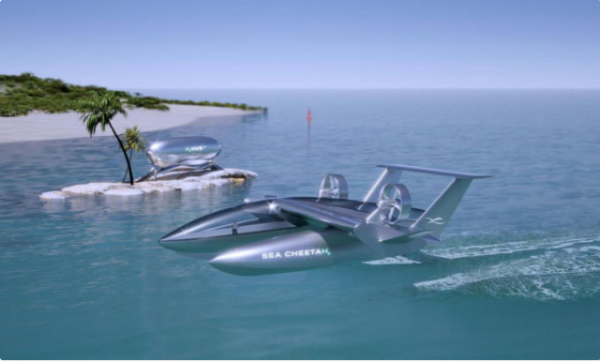Although it looks like an airplane, the new type of boat from Sea Cheetah is still classified as a watercraft because it flies only a few meters above the water.
US company Sea Cheetah has partnered with French company H3 Dynamics to develop the first hydrogen-electric wing-to-ground effect (WIGE) boat, Interesting Engineering reported on October 3.

WIGE boats operate by flying close to the water, taking advantage of the wing-to-ground effect to create greater lift. They remain airborne without constant contact with the water thanks to aerodynamic lift from their wings, fuselage or specially designed parts. They also consume less fuel and have lower operating costs compared to traditional sea or air transport.
Although flying over the water, the low altitude makes WIGE boats operate in the same space as ships. Therefore, they must comply with the same collision avoidance rules as ships.
Sea Cheetah’s WIGE moves just 3m above the water at 250km/h. The range of the vessel has not been announced, but it could be hundreds of kilometres. With the ability to carry heavy loads and a longer range than traditional marine vehicles, the new vehicle is ideal for a variety of applications, including coastal passenger transport, cargo delivery, and rescue.
H3 Dynamics will build the Sea Cheetah’s WIGE’s hydrogen-electric powertrain. This system allows it to cruise the ocean with zero emissions and no need for constant recharging.
“Our hybrid powertrain allows Sea Cheetah’s WIGE to achieve a range and capacity that was previously not possible with batteries, opening up more applications in different parts of the world,” said Taras Wankewycz, CEO of H3 Dynamics.
According to Sea Cheetah founder and CEO Serge Markoff, the lighter flying powertrain will allow the vessel to better perform its mission of zero-emission last-mile deliveries to remote locations. “By combining the two companies’ advanced technologies into one vehicle, the Sea Cheetah can now carry three times the payload of competing aircraft and ships, be 10 times faster than ships, and be 10 times more fuel efficient than aircraft,” Markoff said.








